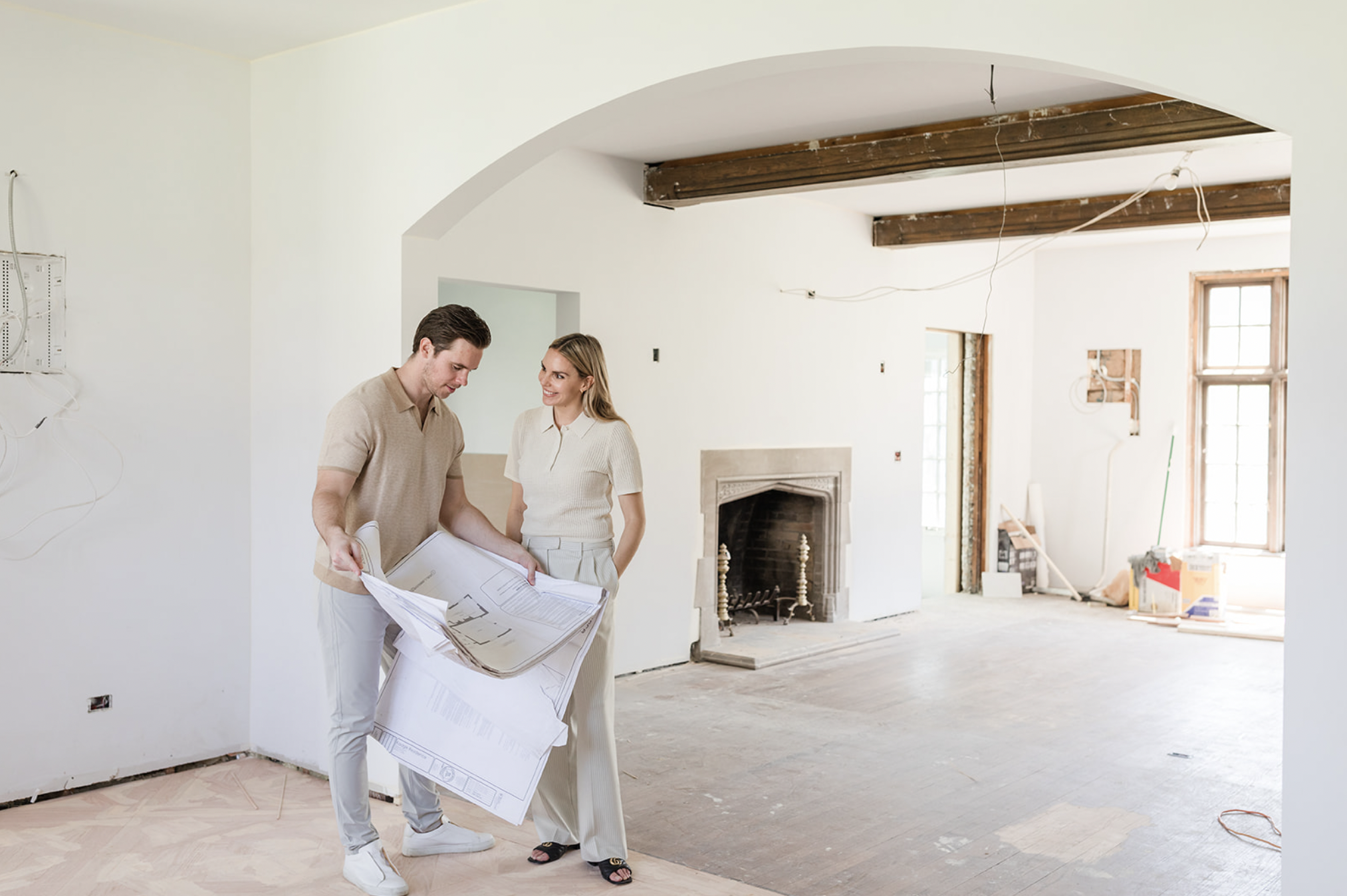
We have to admit something.
When we bought our first fixer-upper, we thought we were being so clever.
We had the spreadsheets. We had the Pinterest boards. We even had a rough sketch of a dream kitchen, complete with brass hardware and a “statement” stove that cost more than our car.
We told ourselves,
“We’ll get an ARM, live in it for a bit, then refinance into a construction loan once we finalize the plans. Easy.”
Spoiler alert: it was not easy.
Between finding an architect, waiting on permits, and getting bids from contractors who all mysteriously disappeared for two weeks at a time, we quickly realized that renovating a home is less HGTV magic and more high-stakes juggling act.
But here’s the good news: our financing strategy worked.
The adjustable-rate mortgage (ARM) gave us the flexibility to buy the home and keep our monthly payments manageable while we planned. Then, once we had our renovation plans and pricing locked in, we refinanced into a construction loan that let us borrow what we needed to actually build the dream.
And now? We help clients do the same — because in a tight market, smart financing is half the battle.
What Financing Options Work Best in a Tight Market?
Whether you’re trying to break into a competitive market or stretch your renovation dollars as far as they’ll go, the right financing strategy can unlock options you didn’t know you had.
Let’s break it down:
1. Traditional Loan vs. Construction Loan
Traditional Loans
These are your standard 30-year fixed-rate mortgages — stable, predictable, and best for homes that are move-in ready. Interest rates typically sit around 5–6%, and payments stay consistent over time.
Construction Loans
If the home needs a full renovation, a construction loan could make more sense. Here’s how it works:
- You only pay interest on the portion of the loan you’ve drawn.
- For example, if you buy a property for $700K and plan $1.3M in renovations, you only pay interest on the $700K until you start drawing renovation funds.
- When you draw $250K to pay contractors, your interest payment adjusts to reflect a $950K balance.
It’s a more flexible way to handle large renovation projects — but it’s not instant.
To get approved, most lenders require:
- Finalized architectural plans
- A signed bid from your general contractor
And let’s be honest — that takes time. Often more time than your closing window allows. Which brings us to…
2. ARMs (Adjustable-Rate Mortgages): A Short-Term Play with Long-Term Benefits
If you’re not ready to jump into a construction loan immediately, an ARM can be a smart bridge strategy.
Here’s the appeal:
- Lower interest rate than a traditional loan (typically 1% lower)
- Fixed for an initial period (e.g., 3, 5, or 7 years), then adjusts annually
- Ideal if you plan to refinance or sell before that adjustment kicks in
In our own renovation, we used a 3-year ARM to buy the house, giving us time to work with an architect and finalize plans. Once the scope and costs were set, we refinanced into a construction loan — and got to work with confidence.
This combo is especially helpful in a fast-moving market where you need to act quickly to secure a property.
3. HELOCs and Cash: Tapping Into Existing Equity
If you already own a home with built-up equity, you may not need to refinance at all.
HELOC (Home Equity Line of Credit):
- You borrow against the equity in your current home.
- Example: Your home is worth $2M and you owe $1M — a bank may lend you a significant portion of that $1M in equity.
Cash:
- If you have it, great — but most people prefer to preserve liquidity during a renovation (because: surprises).
4. Always Borrow More Than You Think You Need
This might be the most important advice we can give:
You can’t borrow more later.
Always borrow more than you think you need up front.
Renovations almost always cost more than expected — hidden plumbing issues, material delays, permit changes — the list goes on. Build in a buffer so you’re not scrambling halfway through your project.
The Bottom Line
In today’s market, it’s not just about finding the perfect home — it’s about finding the right way to afford it. Whether you’re buying a fixer-upper or finally renovating your forever home, there are multiple paths to get you there.
+ view the comments



